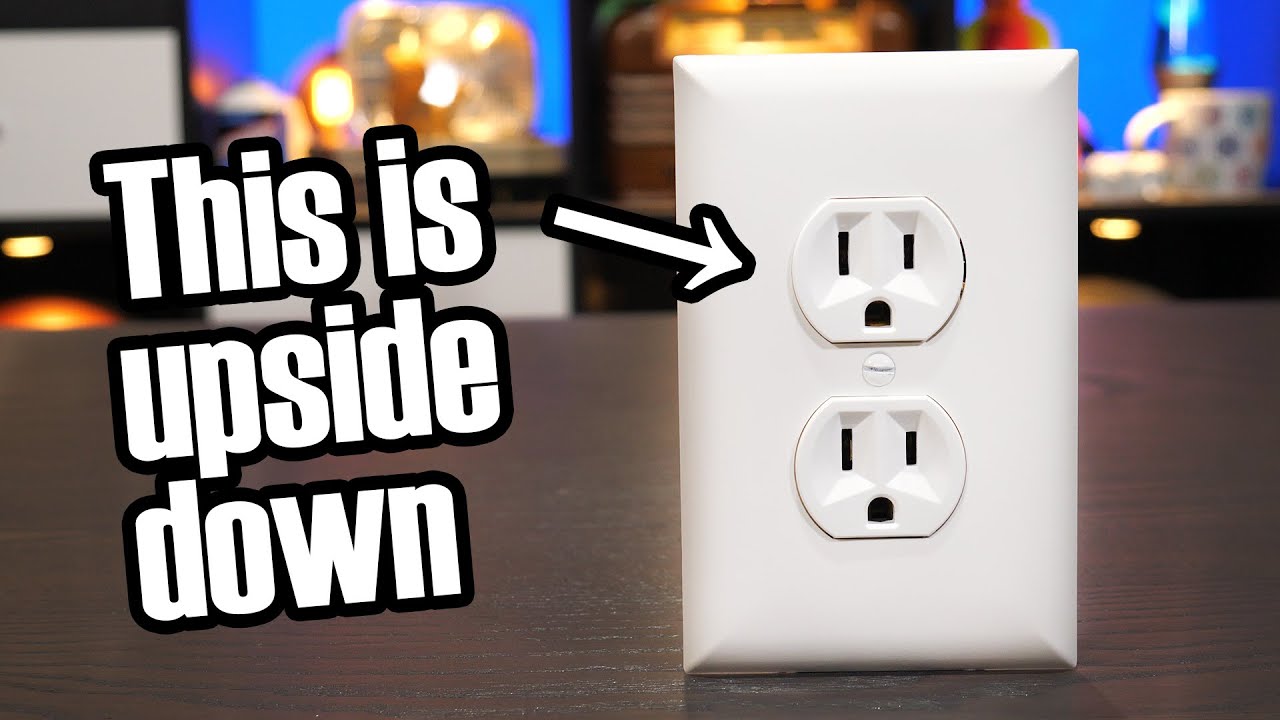I’m surprised there hasn’t been a proactive step to improving electrical safety in North America. As an onlooker, whose done zero research apart from watching YT videos, the regulations seem to be vague/relaxed.
He notes it in the video but the Chicago metropolitan area has pretty strict electrical codes. Everything must run through EMT conduit with fully enclosed electrical boxes. Chicago has some weird thing about preventing fires…hmm can’t think of where that came from…
For commercial, this extends to low voltage as well. Freerunning cat6 or speaker wire down walls and through ceilings is often completely forbidden. Personally I think that’s a bit much…but with the prevalence of PoE and new standards that increase power throughout, maybe it’s not such a bad idea.
Yeah, I was gonna chime in with that last point. PoE++ can pump 100W and you just know some dumbfuck is going to try and force it down some ratty, micron-thick, Cat-0 gash at some point.
I’ve been asked to do similar at my old job…no I will not try to put an AP on this line that’s not even capable of gigabit. Thankfully I moved up to high end commercial where clients actually care about building code and our field technicians are union and work by the book.
Probably because it’s not all that much of a problem. It’s not very common to hurt yourself via normal use of American electrical devices. Not when we have cars and guns to wantonly kill each other with.
https://www.nfpa.org/-/media/Files/Code-or-topic-fact-sheets/InjuriesElectricalOutletsFactSheet.pdf
Injuries involving electrical receptacles (also referred to as outlets) sent an estimated 5,500 people to hospital emergency departments in 2015.
Sure it’s less than others killing machines like cars but it’s not insignificant.
5 thousand, out of a population of roughly 350 million, over the course of a year.
We have child safety outlets that are required in remodels and new construction. The regulation is over a decade old. If people replaced their old outlets, the vast majority of those injuries would not be present. The outlets are about $1 each.
We also have arc fault and gfi circuits required, which old houses don’t have. Those are replacement too. But people are cheap, lazy, or lack the skill to do these minor upgrades themselves.
Safety in North America is vague/relaxed in general compared to the rest of the developed world unfortunately.
Oh, I’m sorry! I thought this was America, go get your bootstraps from the bootstrap store and start lifting! We don need none of that socialist "safety"or what have ya. /s
It’s been code in most places to have receptacles installed with the ground connector facing up for years now.
It’s just that most houses were built 60 years ago, and almost no one pays to have their entire homes electrical system inspected and brought up to code.
There is no such code in the US, so unless you’re talking about the cec idk where you got that idea.
Technically speaking you’re right. There is no true federal level law on electric code. But there is the NEC which is used by most states and most people would consider that the standard electrical code for the country even if that’s not technically true.
The NEC does not have an article for outlet orientation. Some engineered jobs will spec it one way or another (eg. hospitals) but there’s nothing in the code.
I think the video even mentioned that nec doesn’t have an article on it.
Can confirm. I bought a brand new house in 2019. All my outlets were ground down and my house passed the electrical inspection.
Funnily enough my house was built in the 50’s or before, and all the outlets…there are a couple that are inexplicably sideways Chicago style but the rest of them are ground lug up.
A lot of electrical stuff which isn’t allowed in new installations will still pass inspection in an existing property. Otherwise everybody would need to be rewiring their houses every time electric code changes. No (reasonable) inspector is going to make you swap all your outlets just because they’re upside down. But if you are an electrician wiring new outlets then you would have to put them in the corect way.
Another big example of this is ungrounded outlets. You definitely aren’t allowed to used ungrounded wire for any new instalation but if you own a house where ungrounded wire is being used then in most cases an inspector will not make you replace it as long as all the recepticals on it are swapped over to GFI outlets and none of them are in a kitchen or bathroom.
OP stated the house was built in 2019. That’s quite new.
Ah. Somehow I missed that part in the all of 2 lines of text there. I am not the most observant aparently.
My best guess then is that outlet orientation just isn’t part of their states electric code. To be fair I’m also not entirely sure if outlet orientation has even made it into the NEC or if it’s just a best practice thing. It could also just be that their inspector didn’t care. The few inspectors I’ve worked with always tended to not worry about the little stuff unless you did something to piss them off.
What “code” would that be?
Red you dead… bluie go kaplooie…
Go ahead and look up how many people are killed by electricity every year, it’s fewer then people killed by lightning and almost always involves something much more dangerous then using home electricity in the standard way.
People killed by electricity by definition has to be larger than people killed by lightning.
/pedant
Technically, electromagnetism is directly implicated in every death that has ever happened.
This guy gets it. Are magnet’s the most dangerous thing in the universe? After all Blackholes are powerful magnets…
I meant that electromagnetism is ubiquitous in its role in the nature of ordinary matter itself.
Are magnet’s the most dangerous thing in the universe?
No, not even remotely. That’s not to say that the extreme magnetic fields of magnetars wouldn’t be awesomely dangerous, but “most dangerous thing in the universe” is an absurdly high bar to meet.
After all Blackholes are powerful magnets
The accretion disk consisting of material surrounding a black hole is capable of generating strong magnetic fields, rather than the black hole itself.
Only if you don’t differentiate between Current and Static Electricity which are physically distinct phenomenon that aren’t really similar except that electrons are involved.
Current flows through lightning bolts…
This is a standard wall outlet in my country; this is how it looks like with the face plate. This is the surfaced mounted version.
It carries the ground pins as standard and it is sunken in order to prevent touching the charged prongs and it has a built in shutter which is very annoying to tamper with.
Even the ungrounded version is sunk and has the same pesky shutters but it is even starting to become hard to find.
You guys are being played with. Your outlets are death traps.
Your outlets are death traps.
Not they’re not, people are not dying from our outlets. We run 120V here, so it’s not a lot of power.
I’m just as defensive of my standard but I’ve at some point in my life coexisted with one similar to yours and it was unsafe, put into simple therms.
And yet people getting electrocuted here is rarer than people getting hit by lightning, and it almost always people working on power lines or high voltage equipment and virtually never from outlets.
They are not unsafe, they are fine.
Growing up with a similar standard, hearing people saying the exact same thing then, at some point the standard was altered, so someone found the previous lacking on some front.
I’m as defensive of mine as you are of yours.
And what was your previous standard? It may have been significantly worse than North American plugs.
North American plugs are actually fine.
I can’t find pictures of it but keeping in mind the same basic two prong setup, remove the sunken safety socket, ground prongs, ground line and socket safety shutter.
It was essentially a flat face plate with two holes on it.
Ya, that’s way worse than North American plugs. We have a deep ground pin, and the slots hold plugs pretty tightly.
Our outlets are not “death traps.” Standard outlets nowadays are grounded and TR (Tamper Resistant) The outlets are designed so that a grounded plug hits ground first before the rest of plug is energized. They look like this. https://4.bp.blogspot.com/-D-hdRZMa2Zo/Vqe-AfvYA5I/AAAAAAAAAM4/I0Ln6JRNRRw/s1600/photojoiner.jpg
Also while I’m sure people are electrocuted every year, it’s not because they didn’t plug in something correctly and I doubt a more bulky outlet would have save them.
It probably wouldn’t hurt to start overmolding the hot and neutral prongs with plastic for the first quarter inch, but otherwise I’m much more concerned with how fucky extension cords are with their AWG; if you’ve got something heavy, like my 12 amp thickness planer, “can this extension cord handle this load continuously” is a reasonable question that not a lot of them are willing to answer in an accessible way.
I’ll tell you what is the first concern coming to mind when I look at those outlets: the appliances plugs have no safety socket to rest in.
Exposed plugs are prone to being easily damaged by accidental pull-outs.





